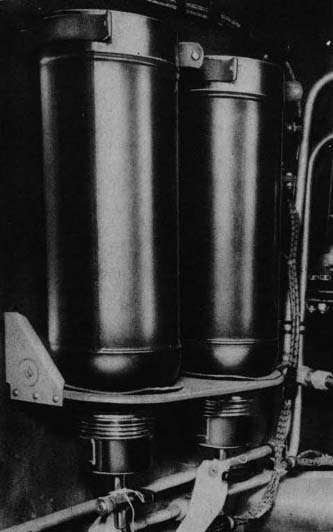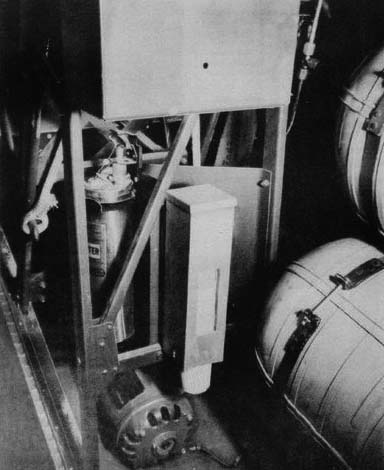
Landers, Frary & Clark Super Vac Flight Thermoses.
When it comes to historic preservation, sometimes the most interesting things are those pieces usually dismissed as the least exciting.
In terms of strategic bombardment in the Second World War, it is very easy to dismiss the conditions at which these airmen were operating. Temperatures averaged between -30° and -50° and the majority of USAAF combat operations were flown above oxygen level, necessitating electrically-heated flight gear (which barely worked) and cumbersome oxygen masks. Even still, the missions could last as long as ten hours. Combine all these influences together and you are left with an experience which is incredibly taxing on the human body.
Many airmen – fighter pilots in particular – developed exercises, stomping their feet and clenching their fists, to try and accelerate blood-flow after hours of non-movement in the cold. Fatigue was particularly a problem, with the cold not helping alertness after hours of monotony. This could be incredibly dangerous, be it in spotting enemy aircraft or simply holding one’s spot in a formation.
This was the idea behind the thermoses.
Stanley Thermos had been in business since 1913, with founder William Stanley using concepts learned making transformers to keep his coffee hot. The thermos consists of two layers of stainless steel, between which is a layer of charcoal dust (at least, up until 2009) vacuum-sealed from the outside world – the secret to holding temperature despite outside elements. Stanley’s best-selling “Super-Vac” model found its way into the airline industry in the 1930s and using the same thermos aboard military aircraft seemed a no-brainer during the Second World War.
Aircraft thermoses were very much-so similar to the standard model, the big difference being the release valves and the fact that they were mounted inverted. These thermoses were produced through Landers, Frary & Clark of New Britton, Connecticut until 1965, at which point production was moved to Aladdin in Nashville, Tennessee (today’s Stanley thermoses are made in China).

Super-Vac thermoses hung in a rack behind the co-pilot in a Boeing B-17.
These thermoses come to us from Larry B. Johnson from St. Cloud, Minnesota. LBJ, an Air Force veteran who worked on Boeing B-47s with Strategic Air Command in the postwar years, was nice enough to donate the second thermos after selling the first. Stanley aircraft thermoses are rare, particularly those made by Landers, Frary & Clark, so it is nice that we now have a matching set for installation into Lucky Thirteen.
We still need to locate the cup dispenser that was installed nearby. The blueprints do not give a manufacturer for this piece, but we do have a photo. If you have one such cup dispenser, or should come cross one, do not hesitate to contact us.

The cup dispenser for the Stanley Super Vac thermoses was mounted on the back of the co-pilot seat in a Boeing B-17.
